It’s a sun-dappled Saturday morning in the Cambrian Mountains, and Sam Amidon has just reached the Q&A section of his workshop. Sam Lee, another artist renowned for his unique reworkings of traditional song, poses the question: “What hope have we left for folk music?” Amidon smiles and broadly gestures, “the answer’s right here at Fire in the Mountain.”
In Amidon’s 2019 interview with KLOF, the multi-instrumentalist highlighted that taking part in community music-making at camps in his youth, folk music was part of everyday life, not something to be preserved or revived. “These were great social activities, great melodies, songs, and stories, good to engage with on a regular basis,” he explained. The communal ethos that Amidon so fondly recalls is palpable here in the Welsh foothills. And it’s surely this sense of community and the boundless curiosity of artists like Lee and Amidon that keeps the fire alive.
With such a strong Old Time crowd in attendance, we’re not surprised to learn that Fire in the Mountain takes its name from a tune by the legendary Kentucky fiddler John Salyer. However, it’s interesting discovering more about the festival’s origins and that the name also serves as a tribute to the farm’s much-loved previous owner, Marianne. It all started back in 2009, when a group of folk obsessives started visiting Marianne, then after her retirement, helped her maintain and restore the 40-acre site. They soon invited along bands, applied for an alcohol licence, and the spark was lit. The Gentle Good and Fernhill then headlined the first official year in 2011.
We arrive onsite having missed those intervening years, but we’re immediately won over by dramatic views of the valley and woods, and the rustic charm of the site, stages and bars. Moreover, we can also afford a pint here, which doesn’t hurt. Being non-corporate, not-for-profit and volunteer-run, the difference between Fire in the Mountain and many other festivals is obvious from the outset.
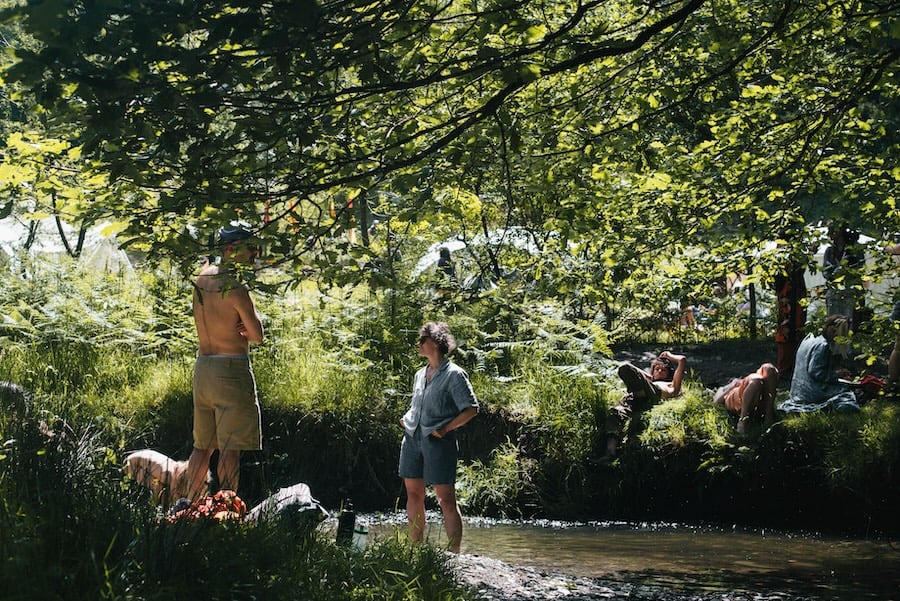
As Dirk Powell declares during his rip-roaring Thursday night set, which sets the tone for the weekend, there are surprises around every corner. We often bump into the multi-Grammy-Award winner throughout the festival, trading between banjo and fiddle at impromptu sessions. Tirelessly, the tunes keep coming, even early on Friday morning, after having a 4l jerry can of Wilkins cider delivered to the stage the night before.
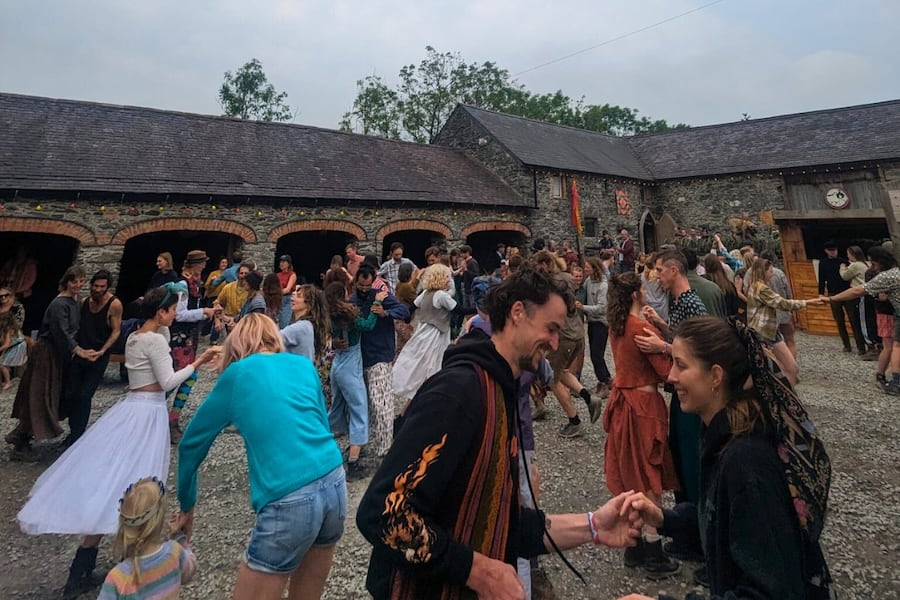
It seems half of the UK folk scene has pitched up too, whether they’re officially playing or not, adding to the casual, ramshackle feel of the festival. On Friday night, Nick Hart emerges from behind the bar of The Agile Rabbit with an apron around his waist and launches into an unusually good double-handed spoons solo, looking as if he’s been interrupted while doing the dishes. His session with Tom Moore and co. the following night is another unexpected highlight.
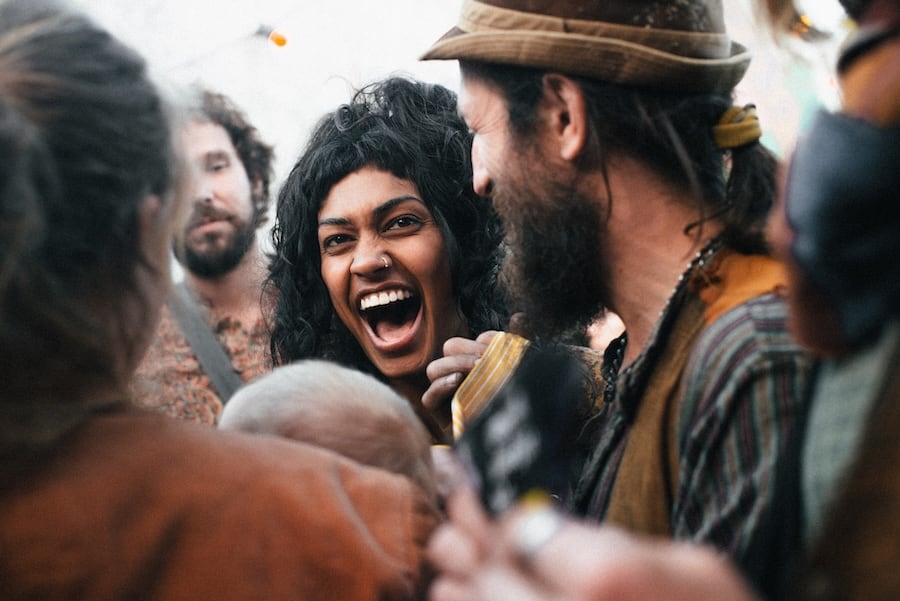
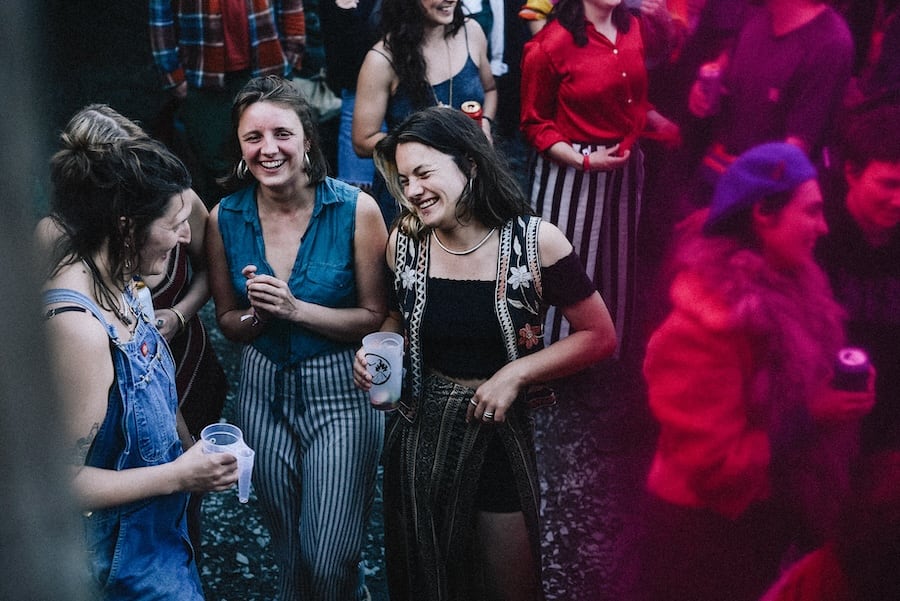
Although we don’t join in with the sessions, we still find plenty of ways to participate over the weekend. Whether that means fumbling our way through Frère Jacques on hammered dulcimers or singing Sean-nós songs with The Weaving’s Cáit Ní Riain. Riain’s workshop is particularly moving as we try to pick up the plaintive strain and cascading ornamentation of this age-old Irish music. Her set with Owen Spafford and Méabh Begley draws deeply from this tradition, though it leans further into high-spirited, deftly executed dance music that keeps the Travelling Barn bouncing from Saturday night into the small hours of Sunday morning.
We also try our hand at polyrhythmic singing and percussion with various members of the Tryani Collective, a supergroup featuring many of Bristol’s best-known musicians. These immersive sessions help us connect the dots during their late Courtyard stage performance, which fuses deep grooves, brain-tickling, tight-knit harmony and unorthodox vocal phrasing. Their sound hints at Tune-Yards, Dirty Projectors and the London Bulgarian Choir, yet like those artists, it also defies easy categorisation. Although grounded in roots music, this experimental attitude is undeniably part of Fire in the Mountain’s appeal.
Something Dogshow run with. Who knew two guys wearing poodle masks and shades, rotating on a heavily modified trolley while operating drums and synths, was what the hour called for? Like HENGE on wheels—though more Cosmic Crufts than Cosmic Dross—they’re coming to steal the title of ‘The World’s Greatest Dog Show’. It makes sense that the brothers are co-founders of Liverpool’s Invisible Wind Factory, as the project recalls the neon-glow aesthetic and proudly innovative spirit of the venue. As the sun sets on the valley, the acts and audience alter under the glare of the stage lights and the nights reach much headier heights.
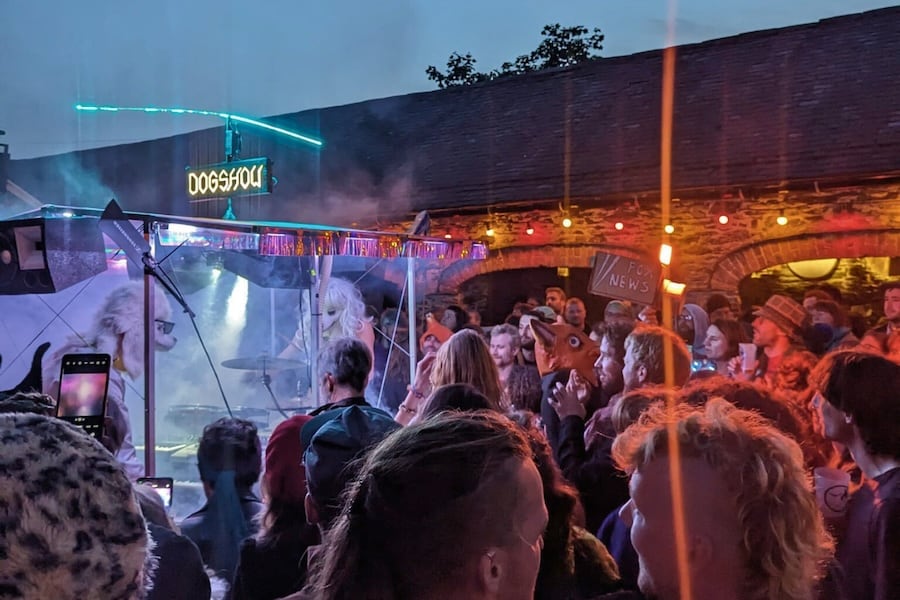
Brìghde Chaimbeul’s performance is more quietly radical. “If you’re feeling chatty, maybe go elsewhere,” the compere remarks in her intro. We’re seated cross-legged, ten people deep from the stage, with those in front of us forming a large cuddle puddle. It doesn’t seem likely that anything is going to disturb the mound of melting limbs anytime soon.
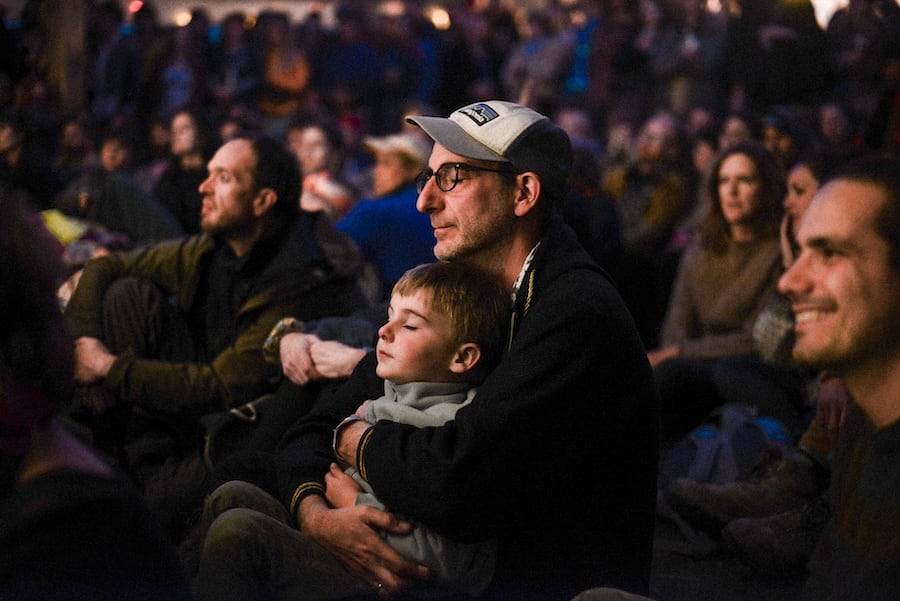
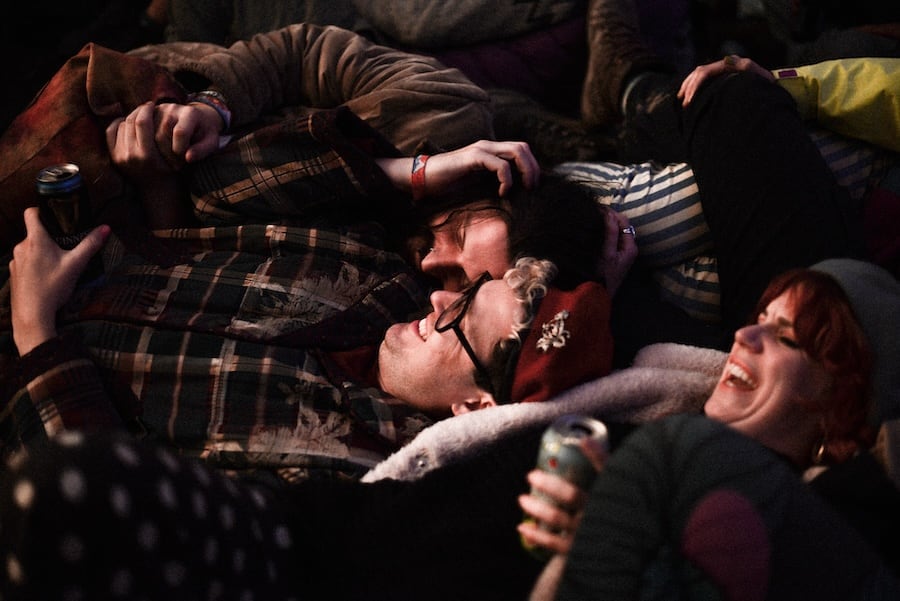
Chaimbeul’s all-encompassing sound cuts straight through the listener. Through echoed effects, the bodhrán-like propulsion of her chanter being mic’d up, and her innate ability to be led by these ever-evolving drones, she’s able to skillfully match the visceral power of her records. It feels as ancient as the Gaelic mythology that has inspired it, evoking a deep sense of the past. Chaimbeul’s take on Phillip Glass’ minimalist epic Two Pages also proves to be a masterclass in mass hypnosis.
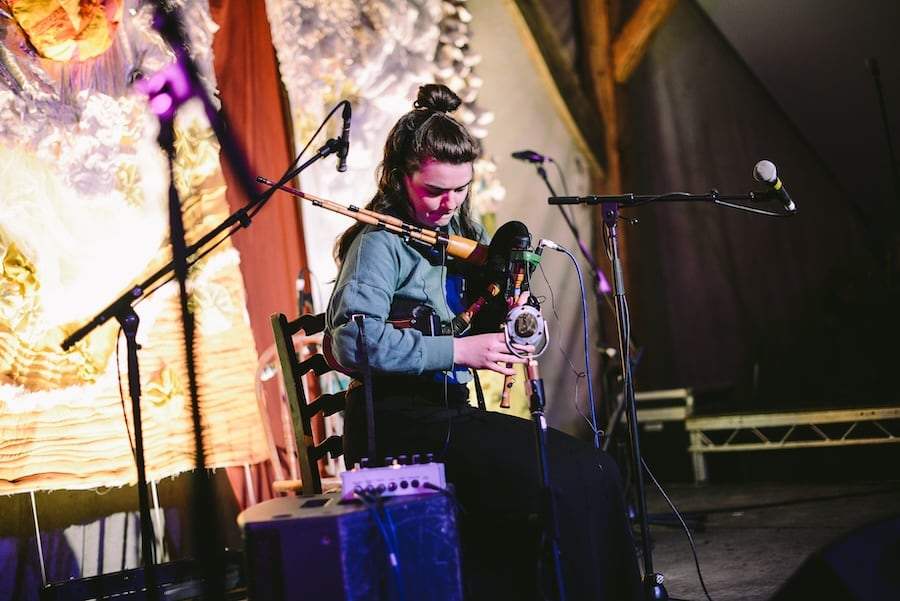
If any performer was made for Fire in the Mountain, it’s Mikey Kenney. In this setting, the restless collaborator shines. He lends his fiddle to Adam Beattie’s beguiling songs, intensifying the magic of heartfelt ode Home Fires Burning and occasionally steering the band into crunchier folk rock territory.
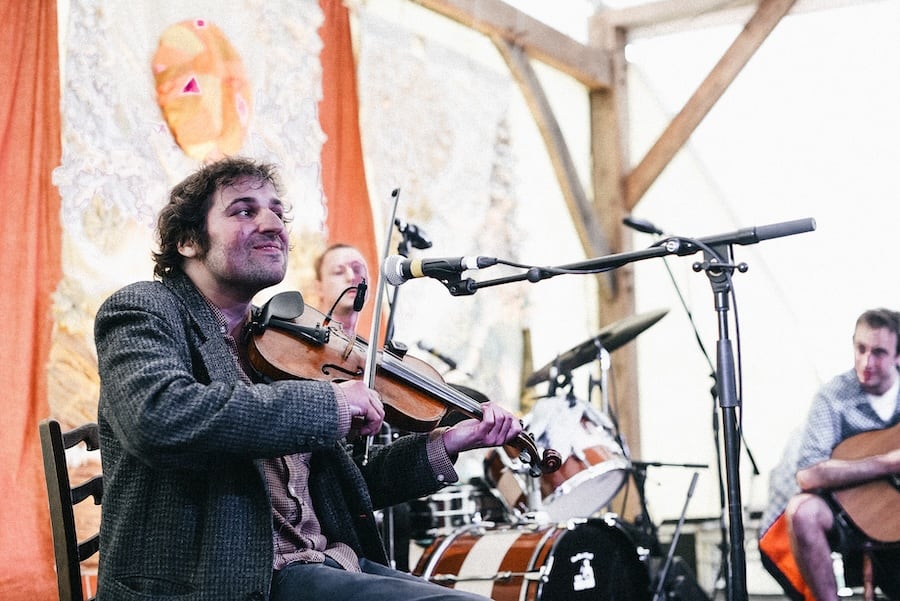
Of all the times we’ve seen him live, Kenney’s Friday afternoon set with guitarist Andy Raven and drummer Michael Paul Metcalfe stands out. As festivalgoers flood in, the trio effortlessly moves between Northwestern fiddle tunes and stirring originals. With songwriting reminiscent of the sweet airiness of The Incredible String Band, Kenney’s recent single Dandelion and a frenzied 3/2 hornpipe prove to be the performance’s peak as fans old and new blissfully jig away.
“I’ve never seen this courtyard so full in ten years,” announces the compere before Johnny Flynn’s encore. For me, someone whose gateway into traditional music was through nu-folk acts like Laura Marling and Johnny Flynn, many of these songs feel particularly nostalgic. Judging by the audience’s wholehearted response, I’m not alone.
The sought-after actor and recent Robert Macfarlane collaborator treats us to a career-spanning retrospective featuring raw renditions of The Wrote & The Writ, Been Listening, Brown Trout Blues and Raising The Dead. The fan-favourite The Water is sung word-for-word by festivalgoers, who also step in when Flynn forgets lyrics, which he shrugs off unfazed. We shrug it off too, as these songs easily stand on their own. “Top five moments,” he beams as The Water settles.
Elsewhere, Cerys Hafana’s sublime set finds the Welsh triple harp player experimenting with English traditional material, which is met with tongue-in-cheek boos during her patter. The Bitter Withy, which Goblin Band’s Rowan Gatherer has described as a ‘biblical deleted scene’, receives a wyrd folk reimaging in Hafana’s hands, its eerie delivery accentuating the carol’s vengeful imagery.
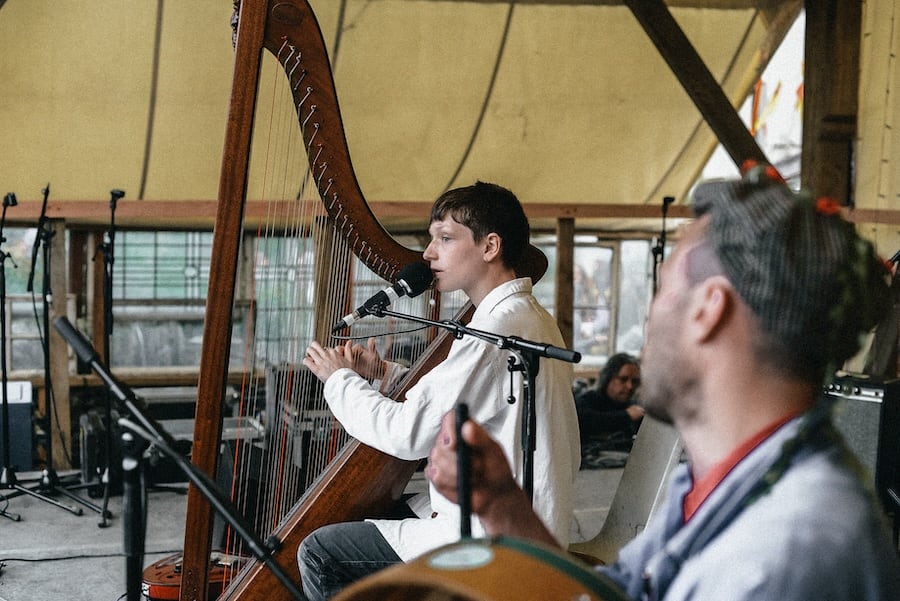
And so, we return to the two Sams. With swallows darting between the courtyard awnings and red kites hovering over the treeline, Sam Lee’s set of love songs for the land have found an ideal setting. There’s a balletic, almost avian quality to his voice as he eases his way through the awed and aching devotionals of his most recent album, songdreaming. The deep resonance of his vocals, combined with the band’s light, decorative touch on Green Mossy Banks and Aye Walking Oh, lift these songs to soaring cinematic crescendos.
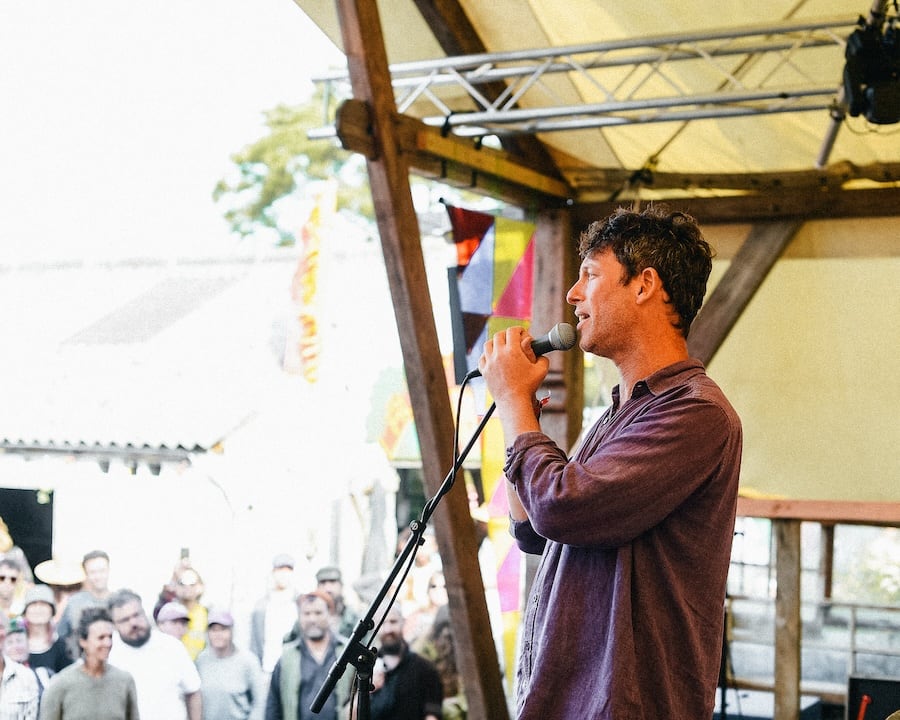
Sam Amidon takes a different tack. Although the squeaky gate fiddle opening seems to deter some, it is balanced by his undeniably satisfying acoustic and clawhammer banjo numbers. “I’ve never seen somebody play a banjo like that,” someone behind us whispers.
Amidon deeply appreciates Harry Smith’s Anthology of American Folk Music and the profound peculiarity of those scratchy, unpolished recordings. Here, he channels that same eccentricity, though we’ve never seen him lean into this Kaufmanesque, unhinged humour this much and it has us hooked. Backed by Chris Vatalaro on all manner of percussion, synth and bass—sometimes all at once—the duo are evidently loving this. By the intense finale of Walking Boss, with Amidon’s voice breaking and powering out, they’ve pulled off one of the best sets of the weekend.
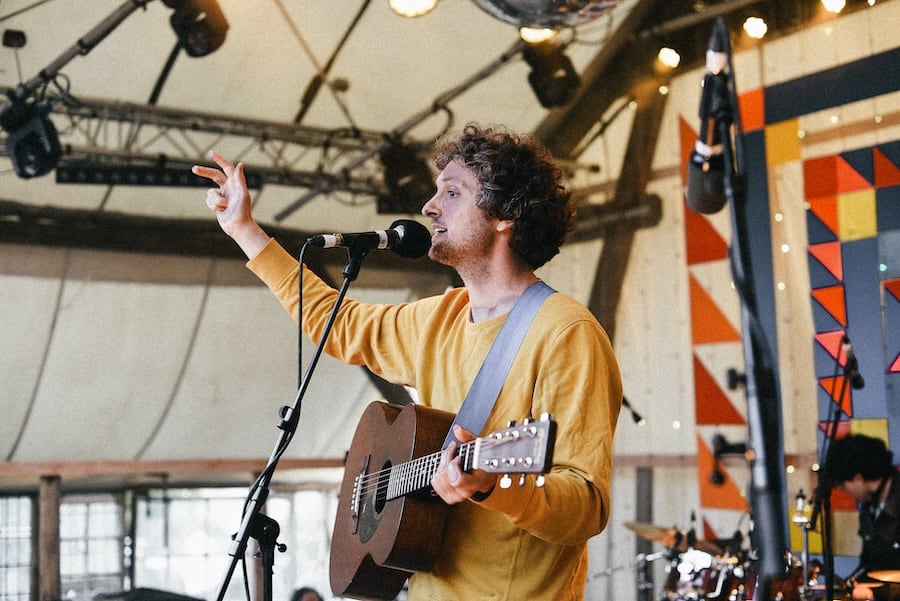
“Everybody playing is my favourite band,” gushes Amidon at one point. It’s a sentiment we wholeheartedly share. Rarely does one encounter such a refreshing lineup and vibrant community as at Fire in the Mountain. Here’s hoping it’s one we can keep returning to time and time again.
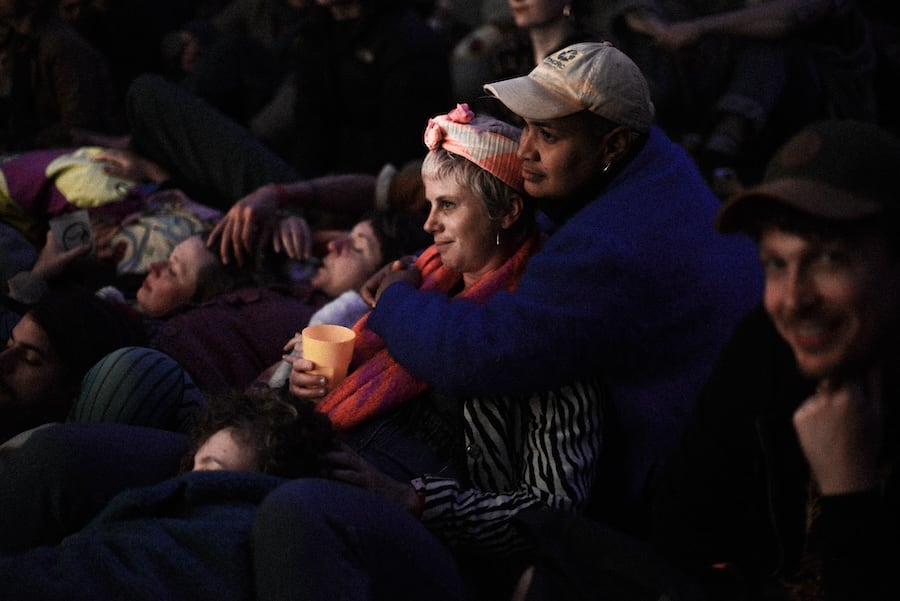
Find out more, including forthcoming events this year here: https://www.fireinthemountain.co.uk/
A huge thanks to Rachel Williams and Sabrina Seguro for such lovely photos. https://www.instagram.com/sabrinaseguro/

